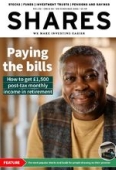Archived article
Please note that tax, investment, pension and ISA rules can change and the information and any views contained in this article may now be inaccurate.
Red-hot US jobs figures cause confusion over market direction

Last week’s much stronger-than-expected January employment report from the Bureau of Labour Statistics has thrown investors a curve ball when it comes to reading the US economy and therefore the outlook for interest rates and the stock market.
The non-farm labour survey showed US employment increased by 517,000 jobs last month, almost twice December’s figure and nearly three times the forecast of 185,000 jobs.
At the same time, growth in average hourly earnings slowed from 4.9% in December to 4.4%, well below the forecast of another 4.9% print, adding to the confusion.
The initial reaction from investors was to sell stocks as a rampant jobs market is top of the Federal Reserve’s ‘hit list’ when considering future interest rate rises.
Yet a consensus quickly emerged that a strong jobs market was proof the Fed can continue raising rates without causing a ‘hard landing’ for the economy.
This behaviour is typical of the last couple of months, where risk appetite has clearly outweighed caution to the extent that stocks which have missed earnings forecasts have outperformed those which have met or beaten expectations.
As analysts at Bank of America point out, the latest rally was kick-started by ‘the ugliest of CPI reports’ last October and will probably end with a ‘peak Goldilocks’ inflation report which convinces investors the all-clear has sounded, allowing the Fed to pivot from raising to cutting rates.
There are obvious signs of excess everywhere in markets, from bonds – where the spread of sub-investment grade yields over US Treasuries is the lowest since 1981 – to equities, such as Tesla (TSLA:NASDAQ) whose share price has risen 80% year-to-date, to cryptocurrencies where bitcoin is up 39% so far this year.
Further evidence comes from the CNN Fear and Greed index, which has swung from a ‘neutral’ level of 47/100 a month ago to a reading of ‘extreme greed’ at 76/100 as of the end of last week.
Driving the extreme greed sentiment reading are many more US stocks making new highs than new lows, a significant excess of stocks rising over those falling, a low level of buying of ‘puts’ (options to sell the index) compared with ‘calls’ (options to buy the index) and strong excess returns from stocks over bonds over the past month.
At this stage we would make two observations: employment is a lagging indicator, so the January non-farm report may be an anomaly; and monetary policy works with a lag, which means we have barely begun to see the true effect on the economy of the Fed raising rates from 0.25% to 4.75% in just 12 months.
Important information:
These articles are provided by Shares magazine which is published by AJ Bell Media, a part of AJ Bell. Shares is not written by AJ Bell.
Shares is provided for your general information and use and is not a personal recommendation to invest. It is not intended to be relied upon by you in making or not making any investment decisions. The investments referred to in these articles will not be suitable for all investors. If in doubt please seek appropriate independent financial advice.
Investors acting on the information in these articles do so at their own risk and AJ Bell Media and its staff do not accept liability for losses suffered by investors as a result of their investment decisions.
 magazine
magazine








